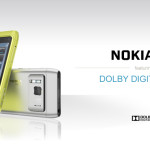 I read Ray Dolby’s obituary in the New York Times because the Dolby noise reduction system is a textbook example of a two sided network business model. Invented in the early 60’s the system enabled you to get better audio quality out of recorded sound. It transformed the audio signal to route around flaws in the tape, tape heads, and transport mechanisms. The problem it solved grew quite severe when cassette tapes became popular. To get the benefit a lot of parties along the supply chain needed to play along. Two in particular. The companies that manufactured cassette players and the companies the manufactured the cassettes containing the entertainment.
I read Ray Dolby’s obituary in the New York Times because the Dolby noise reduction system is a textbook example of a two sided network business model. Invented in the early 60’s the system enabled you to get better audio quality out of recorded sound. It transformed the audio signal to route around flaws in the tape, tape heads, and transport mechanisms. The problem it solved grew quite severe when cassette tapes became popular. To get the benefit a lot of parties along the supply chain needed to play along. Two in particular. The companies that manufactured cassette players and the companies the manufactured the cassettes containing the entertainment.
 The obituary get’s it wrong. Dolby’s achievement wasn’t the signal processing algorithms; his achievement was getting all the players to sign onto his system. Two-sided networks (standards) are all about the difficulty of attracting, coordinating, and locking-in two diffuse groups. Dolby managed to own a standard. And so he got to charge a toll for his small part in intermediating between sound producers and consumers. . He them managed to steward that role so that even today his company (DLB) stands at the center of the standardization of sound. Next time your watching a DVD notice how right there in the credits the Dolby name will appear. Think about how much time and space that credit takes v.s. other contributors. And today, it’s all digital!
The obituary get’s it wrong. Dolby’s achievement wasn’t the signal processing algorithms; his achievement was getting all the players to sign onto his system. Two-sided networks (standards) are all about the difficulty of attracting, coordinating, and locking-in two diffuse groups. Dolby managed to own a standard. And so he got to charge a toll for his small part in intermediating between sound producers and consumers. . He them managed to steward that role so that even today his company (DLB) stands at the center of the standardization of sound. Next time your watching a DVD notice how right there in the credits the Dolby name will appear. Think about how much time and space that credit takes v.s. other contributors. And today, it’s all digital!
I wonder if any of the New York Time’s obits talk about the deceased’s business model.